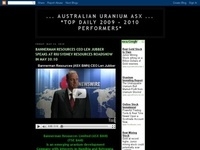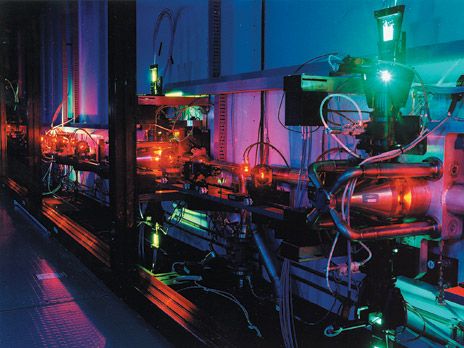Published on Saturday Oct 30 2010
URANIUM has taken the back seat to unlikely new crazes such as rare earths, phosphate and mineral sands and retro fashions such as copper.
The fundamentals of the uranium story haven't changed much since the pre-2007 boom times, when the mere suggestion of possible uranium mineralisation could double a junior's stock price, even if they weren't looking for the stuff in earnest.
Resource Capital Research notes the uranium spot price has crept up 14 per cent in three months, but at about $US44 ($44.3) a pound remains well below the mid-2007 peak of close to $US140 a pound.
The go-go dynamics haven't changed, with nuclear seen as filling a crucial non-carbon energy gap.
We won't go near the debate about whether nuclear is clean energy or not but will merely note that there are 493 planned or proposed reactors, with 59 under construction.
Lest anyone gets excited about a repeat of $US140 a pound prices, new supply is likely to come from sources in Kazakhstan, Paladin's second Namibian project, Kayelekera and, locally, Energy Resources Australia's Ranger mine and Olympic Dam's vaunted $5 billion expansion.
RCR's John Wilson expects the spot price to bottom at $US45-$US50 a pound, with the prospect of retraction in the present half as supply increases.
"With stronger global production anticipated in the second half of 2010, there is potential for the spot price to fall back slightly, though we expect the long-term price to remain well supported on strategic inventory purchases from China, India, Japan and Germany," he says. Look beyond the short term, though, and a supply shortfall emerges.
One contributing factor is that the supply of former Soviet weapons-grade uranium is wearing down. For investors, there's better value in the uranium sector but the winners and losers remain difficult to pick.
Criterion has always been chary about the opportunists who raised $5 million or so to poke around for the stuff (or to keep directors in the manner accustomed). Most of these have fallen by the wayside and the producers' performance has been mixed.
PALADIN ENERGY
Paladin (ASX code: PDN) should be commended for opening not one but two African mines, Langer Heinrich in Namibia and Kayelekera in Malawi. Paladin is meant to be expanding production from its African mines to 7.3 million pounds this year, more than double last year's effort.
Yet a first-quarter report showed production at 1.36 million pounds, but with sales and the received price both 20 per cent lower than they were in the previous quarter.
ALLIANCE RESOURCES
Alliance Resources (AGS) is a 25 per cent owner of the Four Mile project, vaunted as Australia's newest uranium mine and the third biggest behind ERA's Ranger and BHP Billiton's Olympic Dam.
The mine was meant to have been opened in January this year but has been beset by delays, including a stoush between Alliance and the mine's 75 per cent owner Quasar Resources over a native title agreement.
ENERGY RESOURCES
Veteran producer ERA has a habit of underachieving on production, a common excuse being wet weather at its Ranger mine in the Northern Territory. In its third quarter numbers last month, ERA reduced guidance to 3900 tonnes from the 4300 tonnes to 4700 tonnes issued in July.
EXTRACT RESOURCES
Extract Resources (EXT) blips loudly on Criterion's radar. Extract hopes to develop Rossing South in Namibia, the world's fifth biggest uranium deposit. "We have estimated the project will reach first production by 2015 at the rate of 14.5 million pounds a year, with capital requirements of $1bn," broker Patersons says.
Visit my other site Australian Uranium Investing
 Australian Uranium News - Research
Australian Uranium News - Research









